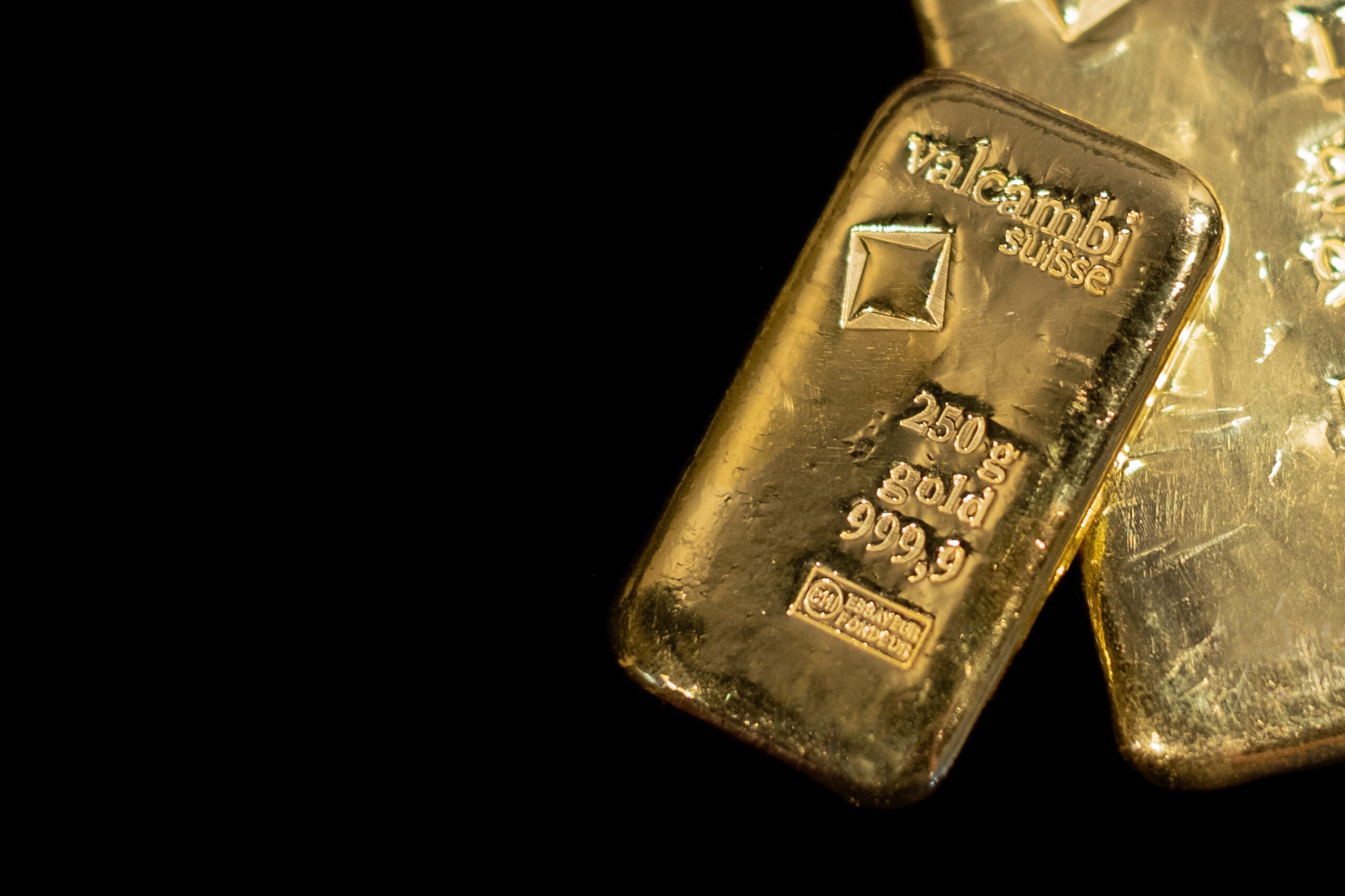Gold has been a valuable resource used as a form of currency since around 700 B.C. when Lydian merchants produced the first coins using this precious metal. Now it’s arguably the only universally recognized legal tender, and in the last 20 years, it has skyrocketed in value—making it a more popular investment choice than ever before.
If you are interested in learning more about how to invest in gold bullion, there are a few things you should know first. In this blog post, we will discuss the basics of investing in bullion, including tips on how to choose the right gold products and strategies for generating the highest possible return on your investment.
What Is Bullion: An Overview
Bullion is a term used to describe gold and silver in the form of bars or coins that world governments officially accept. It is worth noting that the terms “bullion” and “precious metals” are often used interchangeably. These precious metals have been sought-after for centuries due to their universal value, making them an ideal store of wealth.
Bullion is priced based on its inherent value, instead of extraneous factors (such as production costs). Gold and silver bullion provide investors with both short-term portfolio stability and long-term asset protection. This is one of the many reasons that several countries use bullion as part of their official foreign exchange reserves.
Purchasing bullion is therefore considered by many to be one of the safest investments around, if not the safest in history.
Types of Bullion: Differences Explained
Bullion, a bulk amount of a precious metal, available in multiple forms. However, gold bullion is the preferred choice due to its:
- Worldwide acceptance
- Scarcity
- Historical (and current) use as a currency
Platinum bullion is liked for its high value and limited availability, making it ideal for investment diversification into precious metals.
Silver bullion has the most appeal among first-time investors given its affordability and historically steady price. Its popularity is growing as more investors believe it has the highest upside potential.
Together these three distinct types of bullion offer an array of options for investors, depending on their risk appetite and overall objectives.
The Bullion Market: What To Know
If you are an investor looking for a secure financial asset that has considerable value, then the bullion market may be of interest. Bullion is simply a dense form of a precious metal that is primarily utilized for:
- Banking
- Trading
- Investing
It is produced by government mints in:
- Bars
- Coins
- Rounds
It is typically priced based on weight and purity.
An important factor to consider when buying bullion in its physical form, is liquidity—as there must be an interested buyer to facilitate a transaction who is also willing to pay for it at the listed market value. Other things investors should take into account when entering the bullion market are potential costs such as:
- Commissions
- Storage fees
- Insurance premiums
Additionally, it’s wise to confirm whether or not taxes apply when investing in this asset class since each state (or country) may have different regulations. Overall, the bullion market offers those seeking diversification an opportunity to become involved with one of the oldest and most trusted forms of commerce while still enjoying potential future profits.
Investing in Precious Metals: Creating a Bullion Investment Strategy
When investing in bullion, it’s important to create a sound investment strategy. Timing is key when it comes to maximizing profits and minimizing losses.
Make sure you take into account the current price of bullion before making any decisions. Monitor global news and stay abreast of geopolitical events that may affect bullion prices. If you don’t have the time, working with a trusted advisor who does is essential.
Investors should understand the various risks associated with bullion investments. The volatility of gold prices and other precious metals can make returns unpredictable, and if prices drop too much you could experience losses. It’s crucial to diversify your portfolio to avoid taking on too much risk with any investment.
It’s also important to choose the right products when investing in bullion. Different bullion products have different characteristics, making them suitable (or not) for certain types of investors. For example, gold coins are typically considered more liquid than gold bars and therefore preferred by those who may need to invest quickly or access their money at short notice. On the other hand, accredited investors with larger portfolios usually prefer gold bullion bars.
Let’s take a look at several other forms of bullion investment.
Physical Form
Investing in physical precious metals is an excellent strategy for savvy investors looking to protect their portfolios from market volatility. It is important to consider the type of metal you choose for your portfolio, as gold, silver, and platinum all have different properties which can affect the potential success of your investments.
Gold is an effective hedge against inflation and has significantly increased in value over the past several decades, while silver hasn’t reached nearly as high in value per ounce. Yet the more affordable metal usually attracts newer precious metal investors.
Platinum is the rarest of the three and therefore tends to be more valuable but also volatile compared to gold and silver.
Consulting with a financial expert before adding precious metals to your portfolio is highly recommended. Ultimately, careful strategic planning and foresight are paramount before investing in bullion.
ETFs
Exchange-Traded Funds (ETFs) are often hailed as an easy way to play the precious metals market but it comes with many pitfalls.
ETFs offer commonplace investors the possibility to buy into publicly traded companies in the precious metals space and potential exposure without actually owning physical bullion. While a perk might be not needing to have safe storage for physical precious metals, there are usually a myriad of fees that ETF buyers are often unaware of…
- Management Expense Ratio (MER): A fund’s MER are the total annual expenses calculated via a percentage of its assets.
- Management Fee: The annual fee payable by the fund to its acting manager. The costs are associated with custodian and valuation agents fees, transfer agents, and any other service providers retained by the fund manager.
- Operating Expenses: Fees and expenses relating to the independent review committee, brokerage expenses, and taxes.
- Brokerage Commissions: Since ETFs trade like stocks on an exchange they may also be subject to commissions. Rates vary and should always be considered when calculating the total cost of investing in ETFs.
Futures Contract
For those looking to invest in precious metals, futures contracts may be an enticing bullion investment strategy for those with a high-risk appetite. This type of agreement allows investors to purchase:
- Gold
- Silver
- Platinum
At a predetermined price and on a set date in the future. Futures contracts allow an investor to speculate on precious metals, which can result in good returns if implemented correctly but also complete loss.
There can be significant risks associated with this type of investment and you must highly familiarize yourself with this form of trading before getting involved. Even people considered futures experts will typically ensure you’re aware of the severe volatility associated with this tactic.
Mining Stocks
Mining stocks generally consist of publicly traded companies that own mining concessions or have other mining operations in the same sector as the precious metal being purchased. However, investing in mining stocks also exposes investors to the volatility of the stock market—as these stocks usually adhere to the similar unpredictable fluctuations. It is important that investors thoroughly research any companies before investing into them, as there are additional risks often within these organizations beyond the stock market itself.
Things to Know About Bullion Investment Profits: Benefits and Risks
Investing in bullion is a great way to diversify your portfolio and improve financial security. Like most investments, there are essential things to be aware of before making any purchases. Similarly, bullion investments produce profits when the market value of the metal rises above what you paid for it. A good strategy of course is to buy low and sell high; however, this often depends on investors’ ability to predict future changes in the price of gold or other precious metals and their financial wherewithal to hold it until the conditions are favorable.
You must consider whether your investment goal is short-term or long-term, as this will affect when you should buy or sell, and how much potential profit you may earn from all transactions. Additionally, bullion investors must take into account tax declaration regulations and associated costs that may cut into a portion of the overall profits made.
By understanding these factors and carefully planning your investments accordingly, you can maximize your profits and achieve success through bullion investments.
Benefits
Investing in bullion can be a lucrative and rewarding venture, offering investors multiple benefits that begin as soon as the investment is made.
Furthermore, investing in bullion is an accessible form of investment with low barriers to entry (meaning most individuals have access to it). Professionals advise that individuals diversify their portfolios with gold or silver-based investments due to their potential security against inflation and historical growth trends.
Lastly, bullion markets are liquid and prices can change daily so there is generally the opportunity to buy and sell relatively quickly when profit margins become attractive. Investing in bullion does come with risks but with an adequate understanding of the market and proper planning, investors can benefit from this popular form of retirement safeguarding.
Risks
Investing in bullion (much like other investments) comes with risks. The price of gold and other precious metals can be somewhat volatile and subject to market forces that are out of the investor’s control and often unpredictable.
It is therefore important to research the market before investing, as well as only risking what one can afford to lose if things should go wrong. In addition, diversifying holdings among different forms of bullion can help ameliorate the risk of loss, such as:
- Silver Coins
- Gold Bars
- Platinum
What is the Return on Investment?
Investing in bullion is a popular choice for many investors due to the potential for return on investment (ROI). According to financial experts, gold bullion has traditionally provided stability in a portfolio because its value is relatively resistant to other market forces. As with any asset, the return on investment in bullion depends largely on the purchase price and when it is sold.
Historically speaking however, this asset class has proven itself as a resilient long-term investment that can help diversify an investor’s portfolio safely–thereby providing higher returns when conditions are mostly unfavorable in other markets. Ultimately, whether or not an investor elects to include bullion in their portfolio comes down to personal goals and risk tolerance.
Price of Bullion: When Is the Best Time to Buy or Sell?
The price of bullion is one of the most important aspects to consider when investing in gold or silver. The right timing for buying and selling bullion depends largely on an investor’s long-term goals and financial strategy, as well as the ability to predict the future price movement of bullion.
Invest in Bullion Today
If you’re interested in learning more about how to invest in bullion and precious metals, Allegiance Gold is here to help. Our team of experts has the knowledge and experience necessary to guide you through the process of investing in gold, silver, and other precious metals.
Contact us today to learn more about how adding gold bullion or precious metals to your portfolio can protect your savings against inflation and market volatility.



 Custom Precious Metals IRA
Custom Precious Metals IRA Gold IRA
Gold IRA Gold Products
Gold Products Silver Products
Silver Products Platinum
Platinum